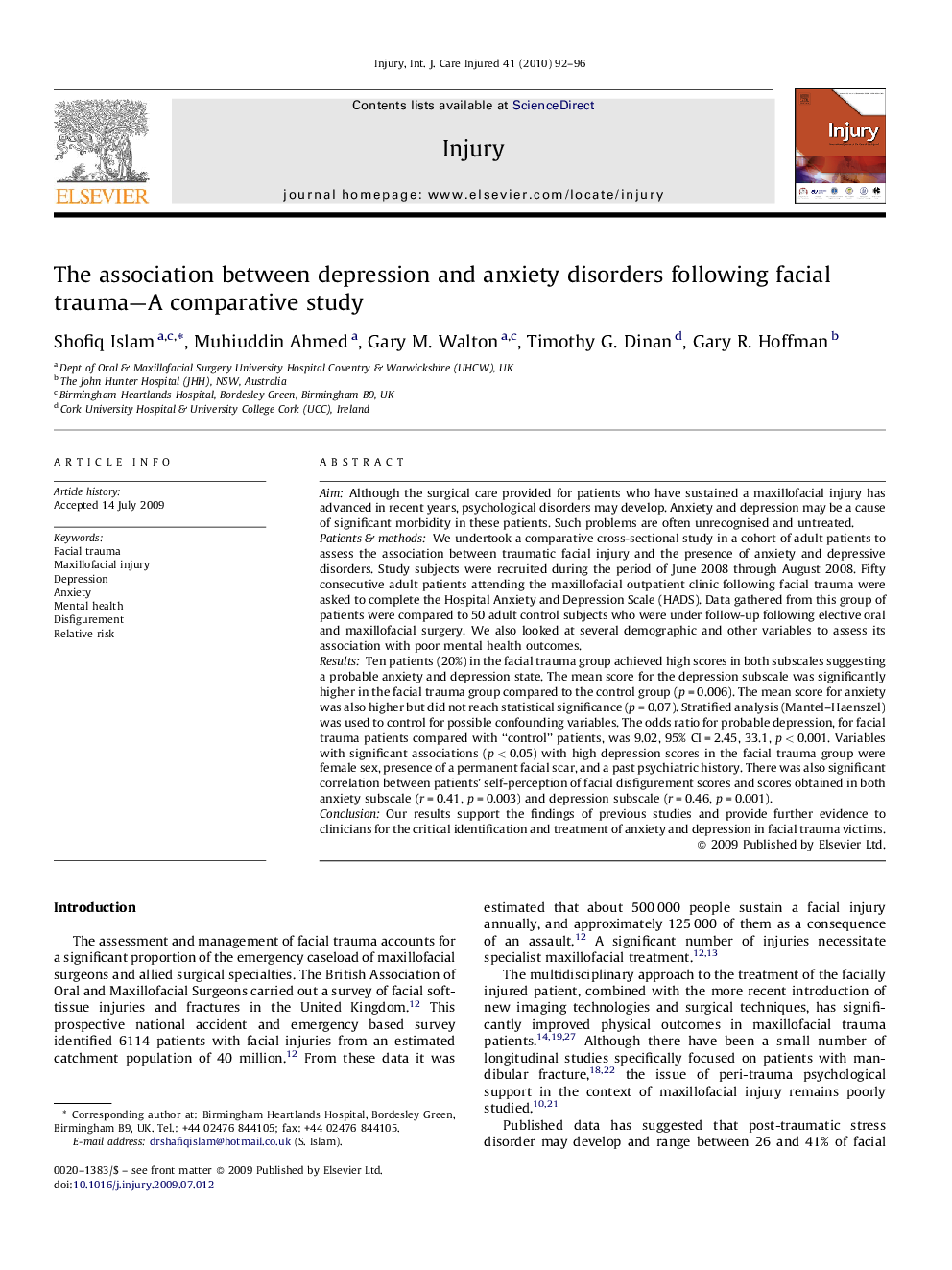| کد مقاله | کد نشریه | سال انتشار | مقاله انگلیسی | نسخه تمام متن |
|---|---|---|---|---|
| 3241741 | 1206089 | 2010 | 5 صفحه PDF | دانلود رایگان |

AimAlthough the surgical care provided for patients who have sustained a maxillofacial injury has advanced in recent years, psychological disorders may develop. Anxiety and depression may be a cause of significant morbidity in these patients. Such problems are often unrecognised and untreated.Patients & methodsWe undertook a comparative cross-sectional study in a cohort of adult patients to assess the association between traumatic facial injury and the presence of anxiety and depressive disorders. Study subjects were recruited during the period of June 2008 through August 2008. Fifty consecutive adult patients attending the maxillofacial outpatient clinic following facial trauma were asked to complete the Hospital Anxiety and Depression Scale (HADS). Data gathered from this group of patients were compared to 50 adult control subjects who were under follow-up following elective oral and maxillofacial surgery. We also looked at several demographic and other variables to assess its association with poor mental health outcomes.ResultsTen patients (20%) in the facial trauma group achieved high scores in both subscales suggesting a probable anxiety and depression state. The mean score for the depression subscale was significantly higher in the facial trauma group compared to the control group (p = 0.006). The mean score for anxiety was also higher but did not reach statistical significance (p = 0.07). Stratified analysis (Mantel–Haenszel) was used to control for possible confounding variables. The odds ratio for probable depression, for facial trauma patients compared with “control” patients, was 9.02, 95% CI = 2.45, 33.1, p < 0.001. Variables with significant associations (p < 0.05) with high depression scores in the facial trauma group were female sex, presence of a permanent facial scar, and a past psychiatric history. There was also significant correlation between patients’ self-perception of facial disfigurement scores and scores obtained in both anxiety subscale (r = 0.41, p = 0.003) and depression subscale (r = 0.46, p = 0.001).ConclusionOur results support the findings of previous studies and provide further evidence to clinicians for the critical identification and treatment of anxiety and depression in facial trauma victims.
Journal: Injury - Volume 41, Issue 1, January 2010, Pages 92–96